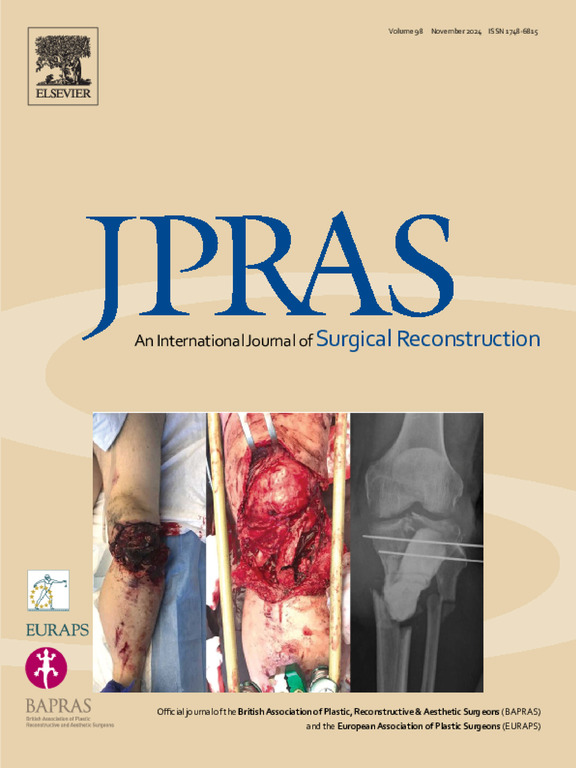颊脂肪垫解剖结构的再思考
IF 2.4
3区 医学
Q2 SURGERY
Journal of Plastic Reconstructive and Aesthetic Surgery
Pub Date : 2025-08-05
DOI:10.1016/j.bjps.2025.07.041
引用次数: 0
摘要
口腔脂肪垫因其解剖学特点和功能而受到关注;然而,其形态和与周围组织的关系一直不一致的描述。本研究旨在重新评估颊脂肪垫的解剖形态。方法采用日本庆应义塾大学医学院捐赠的12具人体尸体。共进行了24例解剖,并使用计算机断层扫描分析了颊脂肪垫的形态。动脉注射技术评估血管分布和连续性。结果颊脂肪垫位于咀嚼间隙内,分为主体脂肪垫、颞延伸脂肪垫和翼状延伸脂肪垫。计算机断层扫描分析显示,脂肪垫包围了咬肌的前缘,并延伸到颞区。解剖显示颊脂肪垫被腮腺导管所分割。血管供应分为颞深动脉、颊动脉和牙槽后上动脉三个区域。结论颊脂肪垫与咀嚼肌、面神经、腮腺导管有复杂的联系。这项研究提供了详细的解剖学见解,可以有助于更安全的手术操作颊脂肪垫。本文章由计算机程序翻译,如有差异,请以英文原文为准。
Reconsideration of the anatomical structure of the buccal fat pad
Background
The buccal fat pad has gained attention because of its anatomical characteristics and functions; however, its morphology and relationship with surrounding tissues have been inconsistently described. This study aimed to reassess the anatomical morphology of the buccal fat pad.
Methods
Twelve human cadavers donated to Keio University School of Medicine were used during this study. A total of 24 dissections were performed, and the morphology of the buccal fat pad was analyzed using computed tomography. Arterial injection techniques were used to evaluate the vascular distribution and continuity.
Results
The buccal fat pad was located within the masticatory space and categorized as the main body, temporal extension, and pterygoid extension. A computed tomography analysis revealed that the fat pad encircled the anterior margin of the masseter muscle and extended to the temporal region. Dissection showed that the buccal fat pad was divided by the parotid duct in most cases. The vascular supply was classified into the following three regions: deep temporal artery, buccal artery, and posterior superior alveolar artery.
Conclusions
The buccal fat pad is intricately associated with the muscles of mastication, facial nerve, and parotid duct. This study provides detailed anatomical insights that can contribute to safer surgical manipulation of the buccal fat pad.
求助全文
通过发布文献求助,成功后即可免费获取论文全文。
去求助
来源期刊
CiteScore
3.10
自引率
11.10%
发文量
578
审稿时长
3.5 months
期刊介绍:
JPRAS An International Journal of Surgical Reconstruction is one of the world''s leading international journals, covering all the reconstructive and aesthetic aspects of plastic surgery.
The journal presents the latest surgical procedures with audit and outcome studies of new and established techniques in plastic surgery including: cleft lip and palate and other heads and neck surgery, hand surgery, lower limb trauma, burns, skin cancer, breast surgery and aesthetic surgery.

 求助内容:
求助内容: 应助结果提醒方式:
应助结果提醒方式:


